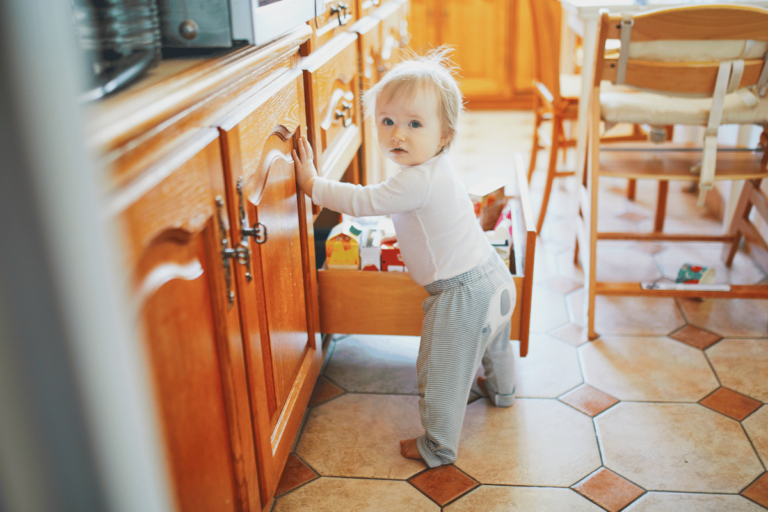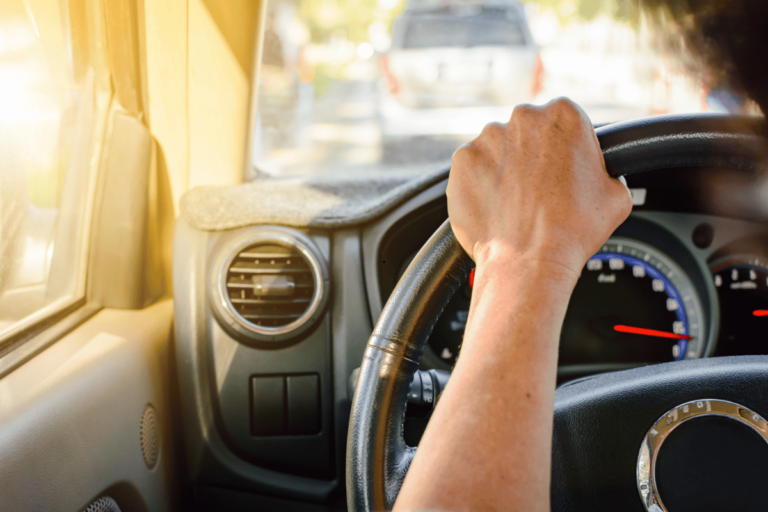Secure Your Space: Expert Home Safety Tips to Keep Your Family Safe
Making Your Home a Safe Haven
Why Home Safety Matters
Keeping your home safe is all about protecting your family and your stuff. A secure home isn’t just about avoiding accidents—it’s about feeling at ease. When your home is safe, everyone can relax and enjoy their space. Knowing why home safety is important can push you to take action and make your place safer.
Did you know a lot of accidents happen at home? We’re talking about falls, fires, and more. Knowing these risks can make you want to step up your safety game. By focusing on home safety, you’re not just protecting your family—you’re making your home a better place to live.
| Common Home Hazards | Percentage of Incidents |
|---|---|
| Falls | 30% |
| Fires | 20% |
| Poisoning | 15% |
| Drowning | 10% |
| Electrical Shock | 5% |
Basic Home Safety Tips
Making your home safe means following some simple rules. Here are some key tips:
- Lock Up: Make sure all doors and windows are locked when you’re not using them. Deadbolts and peepholes can add extra security. Check out our home security systems guide for more tips.
- Light It Up: Good lighting can keep intruders away and help prevent accidents. Use motion-activated lights outside and keep hallways and stairs well-lit.
- Safety Checks: Regularly inspect your home for hazards. Use a home safety checklist to make sure everything is in order.
- Smoke and CO Detectors: Install smoke and carbon monoxide detectors in key areas and check them often. Change the batteries at least twice a year.
- Teach Safety: Make sure everyone in your family knows safety protocols, like emergency exits and fire safety practices.
- Childproofing: If you have little ones, take extra steps to childproof your home. Secure furniture, cover electrical outlets, and keep dangerous items out of reach.
- Electrical Safety: Follow electrical safety tips to avoid electrical fires and use appliances safely.
By following these basic tips, you can cut down on risks and make your home a safe place for everyone.
Lock Down Your Home
Keeping your home safe is crucial for your peace of mind and your family’s well-being. By securing entry points, setting up security systems, and prepping for emergencies, you can make your home a fortress.
Doors, Windows, and Locks
Your home’s first defense is its doors and windows. Make sure they all have solid locks. Here’s a quick guide on what locks work best and where:
| Entry Point | Best Lock Type |
|---|---|
| Front Door | Deadbolt |
| Back Door | Double Cylinder Deadbolt |
| Sliding Glass Door | Pin Lock or Security Bar |
| Windows | Window Locks or Keyed Locks |
While focusing on securing your home, incorporating advanced technologies like a door magnetic lock can enhance your safety measures. Magnetic locks are particularly advantageous for doors that need to remain shut securely yet allow easy and quick access in case of emergencies. For families prioritizing both security and safety, these locks offer an effective solution by providing robust protection while facilitating prompt evacuation if circumstances require.
Check your locks regularly to ensure they’re working. If they’re old or broken, replace them. Adding a peephole or video doorbell can give you extra security. For more tips, check out our home security systems guide.
Alarms and Security Systems
A good security system can scare off intruders and give you peace of mind. Here are some options:
- Monitored Systems: These alert a professional service if there’s trouble.
- Unmonitored Systems: These make noise but don’t alert anyone else.
- Smart Home Devices: Cameras, motion detectors, and smart locks you can control from your phone.
Here’s a quick comparison of what different systems offer:
| System Type | Monitoring | Remote Access | Alerts |
|---|---|---|---|
| Monitored Security System | Yes | Yes | Immediate |
| Unmonitored Security System | No | No | Local Alarm |
| Smart Home Security | Optional | Yes | Customizable |
Pick a system that suits your needs and budget. For a full safety plan, see our home safety checklist.
Emergency Kits
An emergency kit is a must-have. It should help you handle anything from a storm to a blackout. Here’s what you need:
| Item | Quantity |
|---|---|
| Water (one gallon per person per day) | 3-day supply |
| Non-perishable food | 3-day supply |
| Flashlight | 1-2 |
| Extra batteries | 1 set |
| First aid kit | 1 |
| Whistle | 1 |
| Dust mask | 1-2 |
| Local maps | 1 |
Check your kit regularly to make sure everything’s in good shape and not expired. For more safety tips, including childproofing, see our article on childproofing your home.
By focusing on these areas, you can make your home safer and be ready for anything.
Keep Your Home Safe for the Family
Making sure your home is safe is a big deal for your family’s well-being. Here are some practical tips to keep everyone secure.
Childproofing Tips
Got little ones running around? Childproofing is a must. Here’s how to make your home a safer place for kids:
| Area | Safety Measure |
|---|---|
| Kitchen | Lock cabinets and stash sharp objects out of reach. |
| Living Room | Secure furniture to the wall to stop it from tipping over. |
| Bathroom | Use toilet locks and keep meds out of reach. |
| Stairs | Put safety gates at the top and bottom. |
| Electrical Outlets | Cover outlets to prevent shocks. |
Want more tips? Check out our childproofing guide.
Fire Safety Practices
Fire safety is a no-brainer. Here’s how to keep your home fire-free:
| Practice | Description |
|---|---|
| Smoke Alarms | Put smoke alarms on every floor and test them every month. |
| Fire Extinguishers | Keep fire extinguishers in key spots like the kitchen and garage. |
| Escape Plan | Make and practice a family escape plan with exits and meeting points. |
| Cooking Safety | Don’t leave cooking unattended and keep flammable stuff away from heat. |
For a full rundown, see our home safety checklist.
First Aid Essentials
Being ready for medical emergencies is crucial. Stock up on these first aid essentials:
| Item | Quantity |
|---|---|
| Adhesive Bandages | 15 |
| Sterile Gauze Pads | 10 |
| Antiseptic Wipes | 20 |
| Tweezers | 1 |
| Scissors | 1 |
| Adhesive Tape | 1 roll |
| Pain Relievers | As needed |
Check your first aid kit regularly and replace expired items. Also, think about taking a first aid and CPR course to be ready for anything.
By following these tips, you can create a safe and loving home for your family. For more safety advice, read our article on electrical safety tips.
Safety Beyond the Home
Keeping safe isn’t just about locking your front door. It’s about making sure your car, neighborhood, and personal habits are all in check. Let’s break it down.
Car Safety Measures
Your car is like a second home, and it deserves some love too. Here’s how to keep it safe and sound:
| Car Safety Tip | Description |
|---|---|
| Lock Your Doors | Always lock up when you get in or out. |
| Hide Your Stuff | Keep bags and gadgets out of sight to avoid tempting thieves. |
| Get a Security System | Alarms or GPS trackers can be lifesavers. |
| Regular Check-Ups | Keep your car in tip-top shape to avoid breakdowns. |
For more tips, check out our home safety checklist.
Neighborhood Watch Programs
Want a safer neighborhood? Team up with your neighbors. A neighborhood watch can make a big difference. Here’s why:
- Stay Informed: Regular meet-ups help you stay in the loop about local crime.
- Build Community: Knowing your neighbors builds trust and a sense of belonging.
- Quick Communication: Sharing info fast can nip crime in the bud.
Reach out to your local police for tips on starting a neighborhood watch.
Personal Safety Awareness
Being aware of your surroundings can keep you out of trouble. Here’s how to stay sharp:
| Awareness Tip | Description |
|---|---|
| Stay Alert | Keep your eyes off your phone when you’re out and about. |
| Trust Your Gut | If something feels off, it probably is. Get out of there. |
| Stick to Well-Lit Areas | Walk in busy, well-lit places at night. |
| Learn Self-Defense | A self-defense class can boost your confidence and safety. |
Want more safety tips? Check out our article on electrical safety tips to keep your home safe too.
Stay safe out there!





